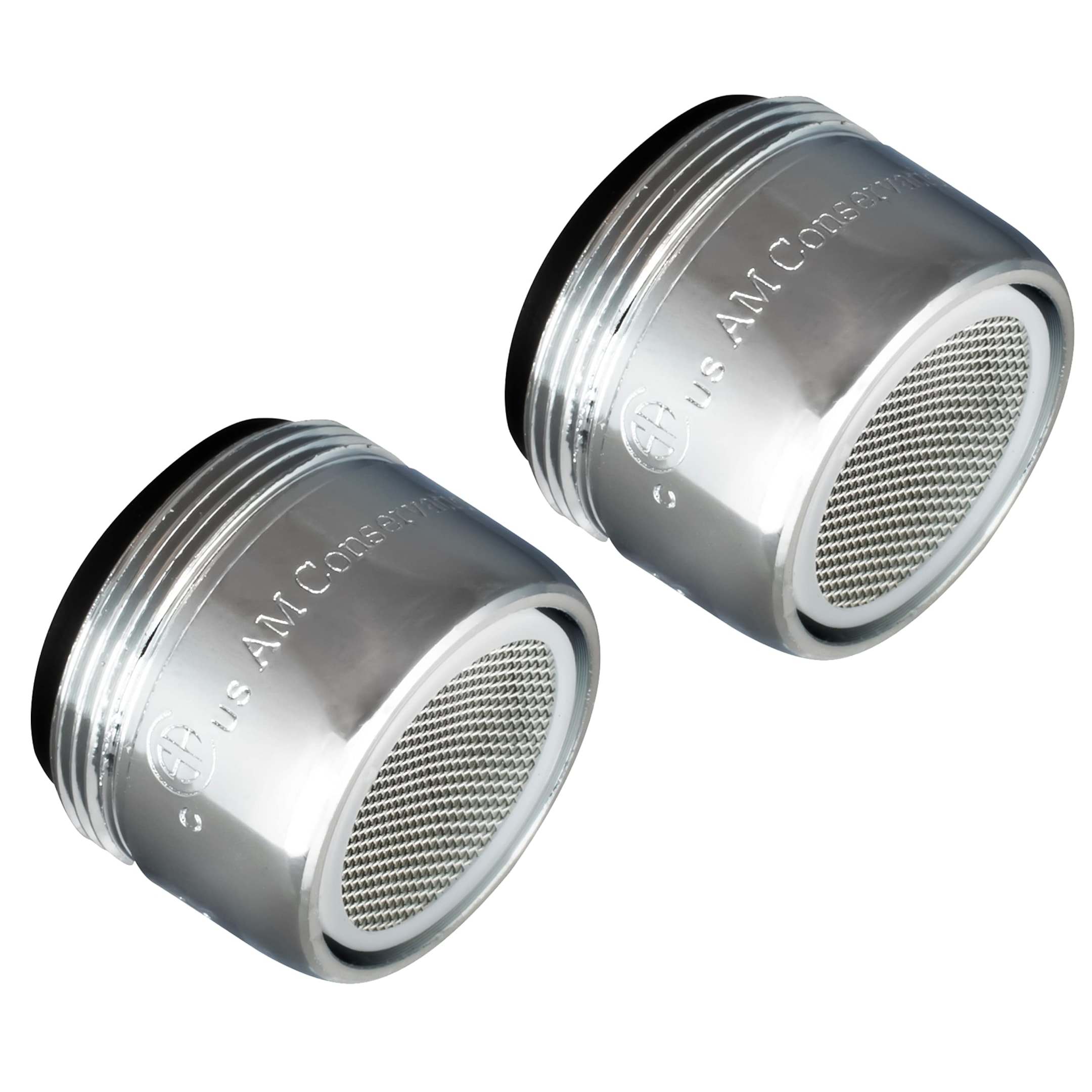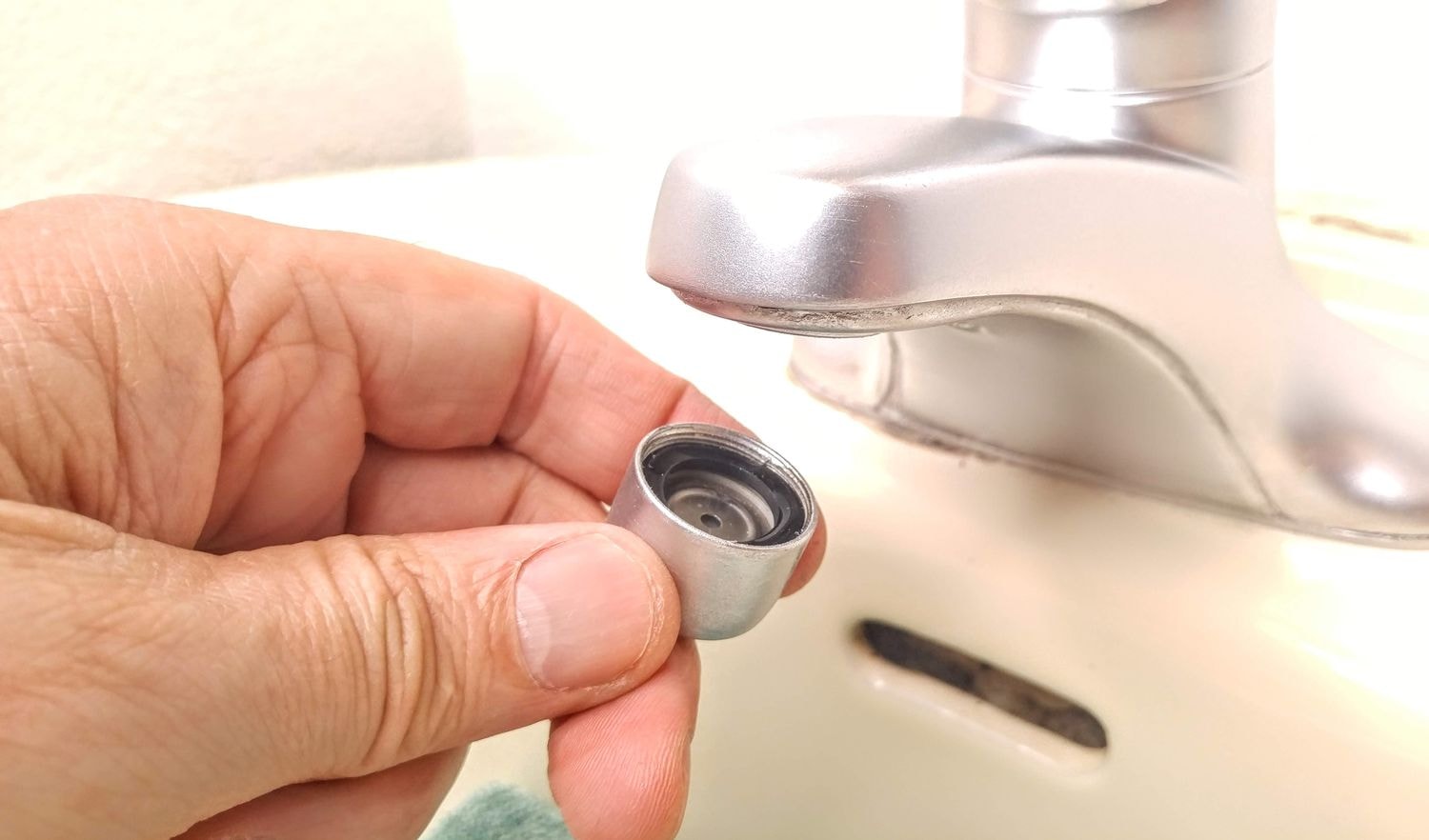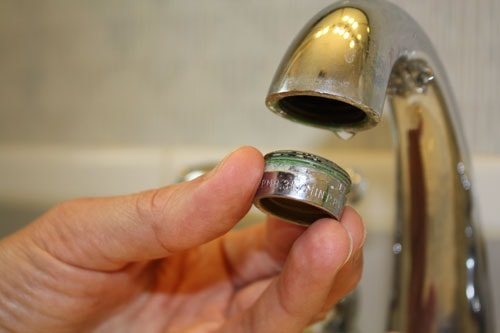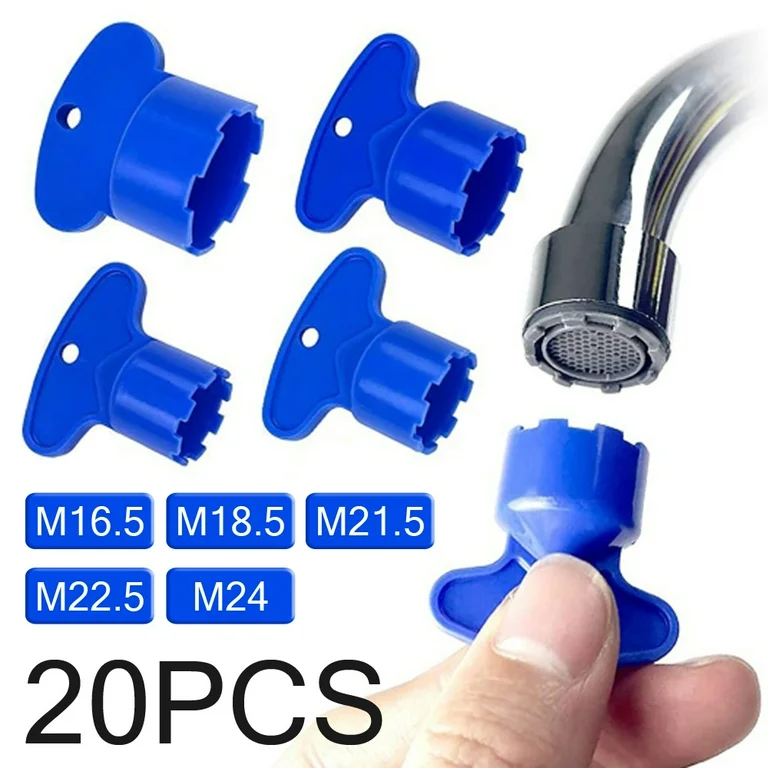Faucet aerators serve an important function in your home plumbing system. They’re very simple, but incredibly aggravating when they don’t work.
As a plumber, poorly functioning aerators are a pet peeve. It drives me nuts when I see a low kitchen faucet water flow or a crooked bathroom sink faucet stream.
But what are they? What do faucet aerators do?
What is a Faucet Aerator?
A faucet aerator is the threaded fitting on the tip of a faucet spout. It looks like a little round screen.
If your kitchen faucet has a pull-out or pull-down sprayer, it may be inside the sprayer. It’s the last thing the water touches before leaving the faucet.
And faucet aerators really do serve an important purpose. They also need regular maintenance.

What do Faucet Aerators do?
Faucet aerators are a marvel of engineering. They’re so simple and serve many crucial functions.
Aerators in Faucets Conserve Water
Aerators help to control the flow rate of your faucet. Federal guidelines mandate that the maximum flow rate of a kitchen faucet or bathroom faucet be 2.2 gallons per minute (GPM), based on a home water pressure of 60 pounds per square inch (PSI). You’re most likely to notice this in your shower valve.
Aerators Soften the Faucet Water Stream
Aerators break up the water, essentially adding bubbles into the stream, and this softens its pour. That prevents water from splashing up on you when washing your hands or dishes.
Aerators Give the Appearance of Greater Water Flow
Nobody enjoys less water coming out of their faucets, and with federal guidelines to mandate a maximum flow rate, you might feel unsatisfied. Unless you have a faucet aerator. With the injected air in the stream, you’re left with the impression of more and stronger water flow.
Aerators Clean Debris from Faucet Water
As highly filtered and chemically enhanced as city drinking water is, it still has some debris. Sand particles from recent water service repairs can get in the pipes. And the pipes themselves can be very old and drop chunks of rusty iron or copper shavings in them. The faucet aerator screens filter all this out.
This is one of the main reasons aerators require maintenance.

Maintenance of Faucet Aerators
When I took my master plumbing test, it was grueling. The first question on the test had nothing to do with the proper sizing of a water piping system or correct gas pipe fittings. It asked what the first thing was a person should check when there’s a faucet water flow restriction.
The answer was the aerator.
It’s the quickest thing to check for water flow issues. The simplest solution, and the most likely culprit.
Aerators are regularly clogged with water debris, mineral deposits, crumbly rubber from plumbing seals upstream, and even construction materials.
Sometimes it can have the appearance of a leaky faucet, as debris holds back water to slowly drip out later.
Removing the aerators and either cleaning or replacing them can save you a visit from the plumber. A popular brand we recommend for replacement parts is Danco.
How to Remove a Faucet Aerator: Simple Plumbing Repairs
Often, removing an aerator is as simple as twisting it off with your fingers.

Other aerators may require a tool, like a channel-locking pair of pliers to get a good enough grip on the aerator and turn it counter-clockwise to unscrew.
If the piece is particularly old, brittle, or cheap, it might seize up and possibly break. In this case, a replacement is obviously required.
Once removed, your aerator might just need a simple scrub and rinse to remove debris.
Or a replacement might be necessary. Again, we recommend the Danco brand.
Aerator Keys
While many aerators are simple to remove by hand or with a common tool, there are also hidden (also known as recessed) aerators that will require you to use a particular tool like the one pictured below. These are called aerator keys.

There are various sizes, and you will have to find and purchase the one to match your faucet. You can usually buy them in bulk packs with varying sizes. Be sure to ask your plumbing-enthusiast friends if you can borrow a piece before you go out and buy your own. Sharing is caring. 😉
How to Clean a Faucet Aerator Without Removal
Faucet aerator maintenance doesn’t always require removal! If the clog is from mineral buildup, tehre’s an easy fix.
You can clean the aerator head similarly to how you probably clean your shower faucet–use a container or plastic bag attached to the faucet to submerge your piece in white vinegar for 15 or 20 minutes to loosen the mineral buildup.
You can also scrub the outside of it with a small brush.
If the clog is caused by actual debris inside of the aerator, this may not work, and you will have to fully remove the piece to clean it out.
Clogged Faucet Repair
Maintaining and replacing the aerator in your faucet is a pretty simple task. I wouldn’t hire a plumber just for that. But if you find that you need a new kitchen faucet installation or have a leaking shower valve that needs repair, please call us, your friendly Venice plumbing company.
Advocate Master Plumbing will send a local master plumber for friendly prompt customer service to address any home plumbing repair services or installations you need.
Got a problem on the other side with a clogged drain? Check out this guide on clogged drains: Drain Cleaning

